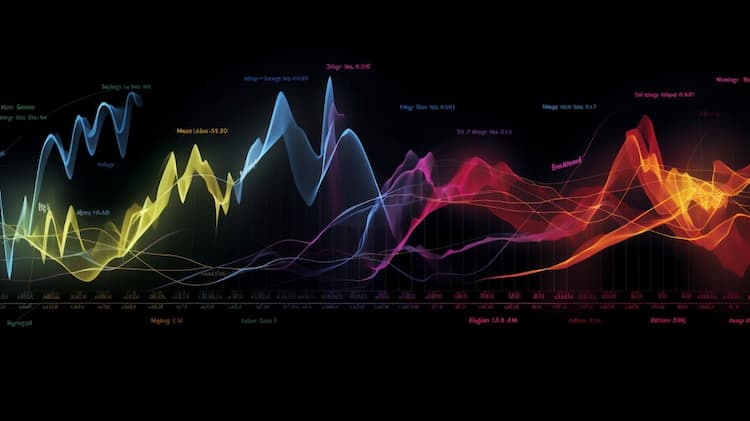
What is the PFIX ETF ?
Discover the world of ETFs and unravel the mystery of PFIX ETF in this informative article. Explore the ins and outs of these investment vehicles and gain insights into the unique features and benefits of PFIX ETF.
Goldman Sachs Asset Management, L.P. (GSAM) is the issuer of the GREI ETF. Under normal circumstances, this ETF invests at least 80% of its net assets in equity investments in U.S. and non-U.S. real estate and infrastructure companies. GSAM defines real estate companies as those in the real estate sector and infrastructure companies as those that own or operate infrastructure assets, which may include utilities industries.
While the primary focus of the Goldman Sachs Real Estate & Infrastructure ETF (GREI) may revolve around real estate and infrastructure investments, it doesn't overlook the importance of dividend distributions. The fund generally invests in U.S. and non-U.S. real estate and infrastructure companies aligned with key thematic growth drivers, including tech innovation, environmental sustainability, new age consumer trends, and the future of healthcare. GREI's dividend distributions are influenced by the dividend policies and performances of its constituent companies, providing investors with the potential for both capital appreciation and dividend returns. It's important to note that the fund is actively managed and not an index fund, allowing for flexibility in selecting investments that align with its thematic focus.
Tracking the Global Real Estate & Infrastructure ETF (GREI) involves investing in a diversified portfolio of U.S. and non-U.S. real estate and infrastructure companies. GREI aims to allocate at least 80% of its net assets to equity investments in these sectors, focusing on companies aligned with key themes such as tech innovation, environmental sustainability, new age consumer preferences, and the future of healthcare. The ETF's investments are not restricted by company capitalization, allowing it to invest in small- and mid-cap companies. Additionally, GREI may have economic ties to at least three countries, including the United States, and it concentrates its investments in the real estate and utilities sectors. As an actively managed ETF, GREI does not seek to replicate the performance of a specific index, providing flexibility in its investment approach.
The correlation aspect of the Goldman Sachs Real Estate and Infrastructure ETF (GREI) is essential for understanding its performance in relation to the real estate and infrastructure sectors. GREI primarily invests in U.S. and non-U.S. real estate and infrastructure companies, focusing on key themes such as tech innovation, environmental sustainability, new-age consumer trends, and the future of healthcare. These thematic investments can influence GREI's correlation with various market factors and sectors. To analyze and gain insights into GREI's correlations with specific assets or sectors, investors can utilize ETF Insider's web app, which provides in-depth data and visualizations to help identify overlaps and trends in GREI's performance.
The Goldman Sachs Real Estate & Infrastructure ETF (GREI) primarily focuses on investing in equity securities of U.S. and non-U.S. real estate and infrastructure companies. The fund's strategy is centered around identifying companies aligned with key themes associated with secular growth drivers for real estate and infrastructure assets, such as tech innovation, environmental sustainability, new-age consumer trends, and the future of healthcare. These thematic investments provide exposure to industries driving technological advancements and sustainable practices while potentially offering diversification benefits. However, as a non-diversified fund, GREI may have a higher concentration in its chosen sectors, leading to increased risk.
The exposure characteristic of the GREI ETF (GREI) highlights its focus on investments in U.S. and non-U.S. real estate and infrastructure companies. The fund, managed by Goldman Sachs Asset Management, seeks to align with key themes associated with secular growth drivers in these sectors, including tech innovation, environmental sustainability, new-age consumer preferences, and the future of healthcare. This ETF allows investors to gain exposure to companies that are at the forefront of these growth trends, providing an opportunity to participate in the potential upside of these thematic areas.

ETF Insider is a data-driven portfolio analytics and optimization platform that introduces a more efficient and practical way to visualize, analyze and optimize portfolios.
Rather than focusing on the surface-level attributes of ETFs and Mutual Funds, ETF Insider goes deeper by examining the underlying holdings of exchange traded products.
By organizing and structuring that data, investors can easily navigate within their overlapping layers.
This innovative perspective combined with modern data visualization and modeling tools, provides an entirely new approach to portfolio optimization that can quickly expose both portfolio inefficiencies and opportunities.

Discover the world of ETFs and unravel the mystery of PFIX ETF in this informative article. Explore the ins and outs of these investment vehicles and gain insights into the unique features and benefits of PFIX ETF.

We'll undertake an in-depth comparison between two ETFs from different issuers: CG (Capital Group) and CNDX (FTSE China A50 Index ETF).

The GREI ETF is a specialized investment fund that focuses on a specific sector. This exchange-traded fund offers investors exposure to a range of companies in this sector.
ETF Insider is a novel portfolio optimization tool that uses the power of data visualization to gain insight into portfolio compositions, concentration risks, portfolio efficiency and more. Complex financial data can be transformed into visually appealing and easily digestible graphs and charts, allowing investors to quickly identify trends and make well-informed investment decisions. Not only does this save time, but it also increases the accuracy and effectiveness of portfolio management.